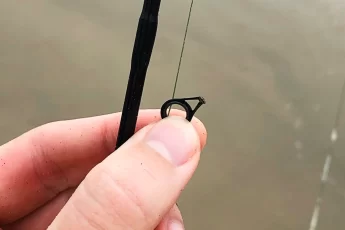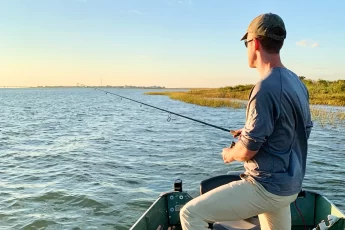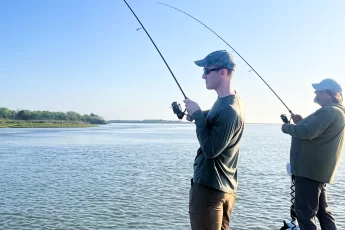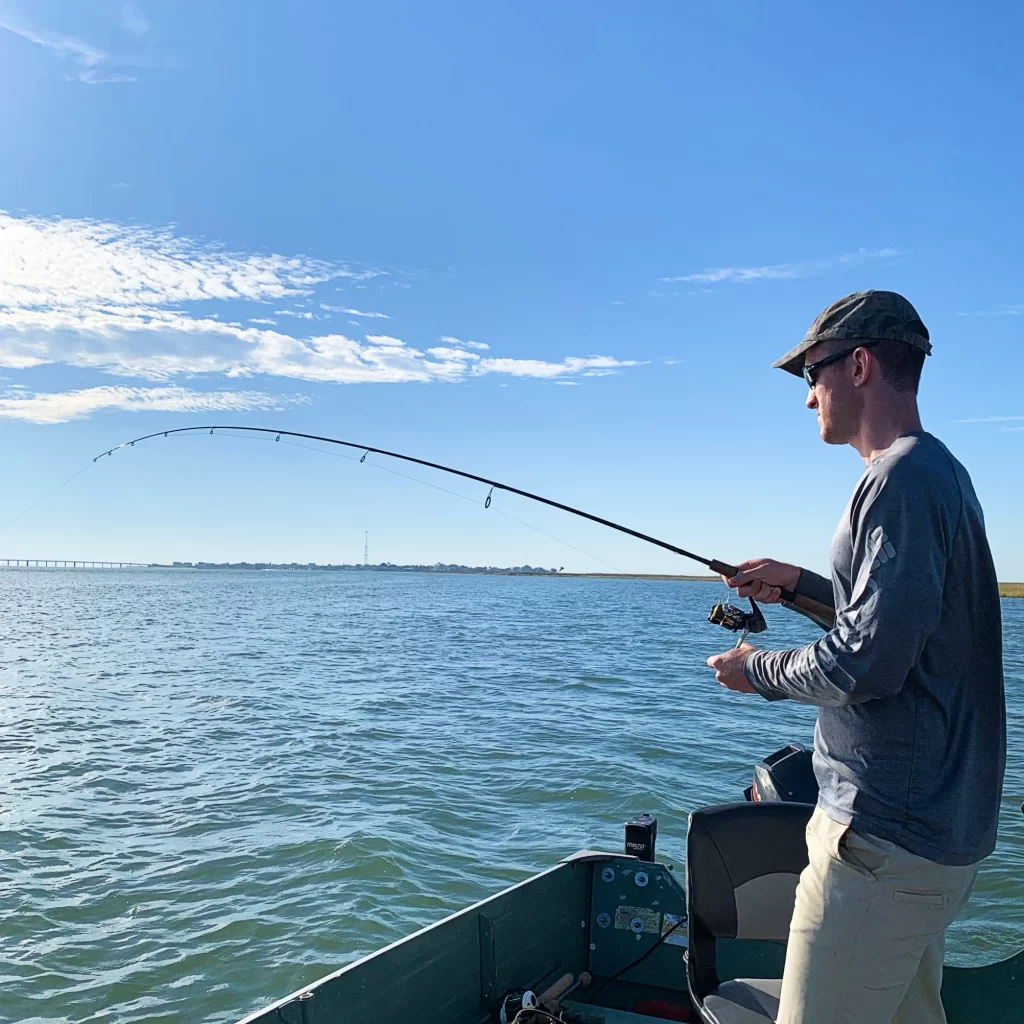
Choosing the right fishing rod length is more than a matter of preference—it’s a strategic decision that significantly impacts both your success and enjoyment on the water. Rod lengths vary significantly, ranging from compact two-foot rods designed for ice fishing to formidable fifteen-foot surf rods capable of casting bait beyond the breaking waves.
The impact of rod length extends to several critical aspects of fishing: casting distance, accuracy, and maneuverability. A longer rod can enhance your casting range, allowing you to cover more water and reach distant fish. However, it may also introduce challenges in maneuverability and accuracy. On the flip side, shorter rods provide improved accuracy and ease of handling, especially beneficial in cramped or obstacle-rich fishing spots. The optimal rod length for any angler depends on a combination of factors, including the fishing style, location, and the species being targeted.
In this article, we will delve into the nuances of selecting the ideal fishing rod length. We’ll explore common rod lengths and their applications, factors influencing rod length choice, and the pros and cons associated with different lengths. Whether you’re a new or seasoned angler, understanding how to choose the right rod length will enhance your fishing experience, making each trip more productive and enjoyable.
*Disclosure: I only recommend products I would use myself and all opinions expressed here are my own. This post may contain affiliate links that at no additional cost to you, I may earn a small commission.
Table of Contents
- Understanding Fishing Rod Length
- Factors Influencing Rod Length Choice
- Pros and Cons of Different Rod Lengths
- Short Length Rods (Under 6′)
- Medium Length Rods (6′-7’6″)
- Long Length Rods (Over 7’6″)
- Practical Tips for Selecting the Right Rod Length
- Matching Rod Length to Action and Power
- Top Rod Recommendations for Specific Techniques
- Conclusion
- Frequently Asked Questions
Understanding Fishing Rod Lengths
The length of a fishing rod is a critical factor that can significantly impact your fishing experience. Measured from the tip to the end of the handle, fishing rod lengths vary from as short as two feet long for ice fishing rods and up to a whopping fifteen feet for long surf rods. Each size serves different purposes.
The length of your rod affects casting distance, accuracy, and control. A longer rod can cast farther, but may be more challenging to maneuver and cast accurately. Shorter rods offer more precision and are easier to handle, especially in tight spaces. The right length depends on your fishing style, location, and target species.
Common Rod Lengths and Their Uses:
- Short Length Rods (Under 6′): Ideal for fishing in confined spaces, such as from shorelines with lots of brush. They offer better accuracy for short casts. Short rods are great options for vertical jigging techniques that do not require long casts.
- Medium Length Rods (6′-7’6″): These rods are the most versatile. Perfect for beginners and all-around fishing, they offer a balance between casting distance and control. Suitable for both live bait and lure fishing.
- Long Length Rods (Over 7’6″): Designed for long-distance casting, these rods are excellent for surf fishing or when you need to cover a lot of water with long casts. They offer great leverage but are cumbersome to maneuver.
Factors Influencing Rod Length Choice
Choosing the right fishing rod length for you is influenced by several key factors. Longer rods come with the advantage of increased casting distance at the expense of accuracy and maneuverability, and vice versa. Factors like portability or restrictions like cramped casting conditions may influence you towards a shorter rod. Picking the right rod length is a balance of these key considerations. Read on to see our thoughts on the most important factors to take into account when picking a fishing rod length.
Casting Distance
Casting distance is the most important aspect of fishing that rod length affects. Longer rods are able to cast baits further with significantly less effort due to the increased leverage they provide. This leverage enables anglers to propel lures or bait further with the same amount of effort compared to using a shorter rod.
Casting distance is important for certain fishing styles and techniques, like surf fishing or utilizing crankbaits as search baits, to effectively cover water or get that extra few yards out of a cast. When casting distance is the key factor, go with a longer rod. For techniques that don’t require long casts, like vertically jigging off the side of a boat, a shorter rod will prove more comfortable for the angler.
I remember the first time I went pier fishing in Galveston I only had a 6 foot rod. No matter how hard I tried to cast my bait, I couldn’t get the casting distance needed to get into the fish zone. Anglers around me were casting ten foot or longer surf rods twice the distance I was achieving with half the effort.
It’s important to consider that while longer rods can significantly enhance casting distance, this comes at the cost of accuracy and maneuverability. For example, a fifteen foot surf rod would be nearly impossible to handle in a kayak.
Casting Accuracy
The length of a fishing rod significantly influences casting accuracy, a crucial aspect for anglers targeting specific areas or fishing in environments with numerous obstacles. Shorter rods offer greater control and precision during the casting process, allowing for more accurate placement of lures or bait. This precision is particularly beneficial in scenarios where fishing around structures such as docks, overhanging trees, or in narrow streams, where the ability to place a lure in a precise location can be the difference between catching a fish and snagging a branch.
A relevant anecdote for prioritizing casting accuracy – The Juran clan frequently targets smallmouth bass in the waters of Northern Wisconsin. During certain times of year, our experience has been that casting accuracy is king. One year, the smallies were so tight to cover that getting 6 inches closer to a stump or rock was the difference between a bite or not. We all chose to smallmouth bass fish with casting rods around 6’6″ to maximize accuracy of our casting.
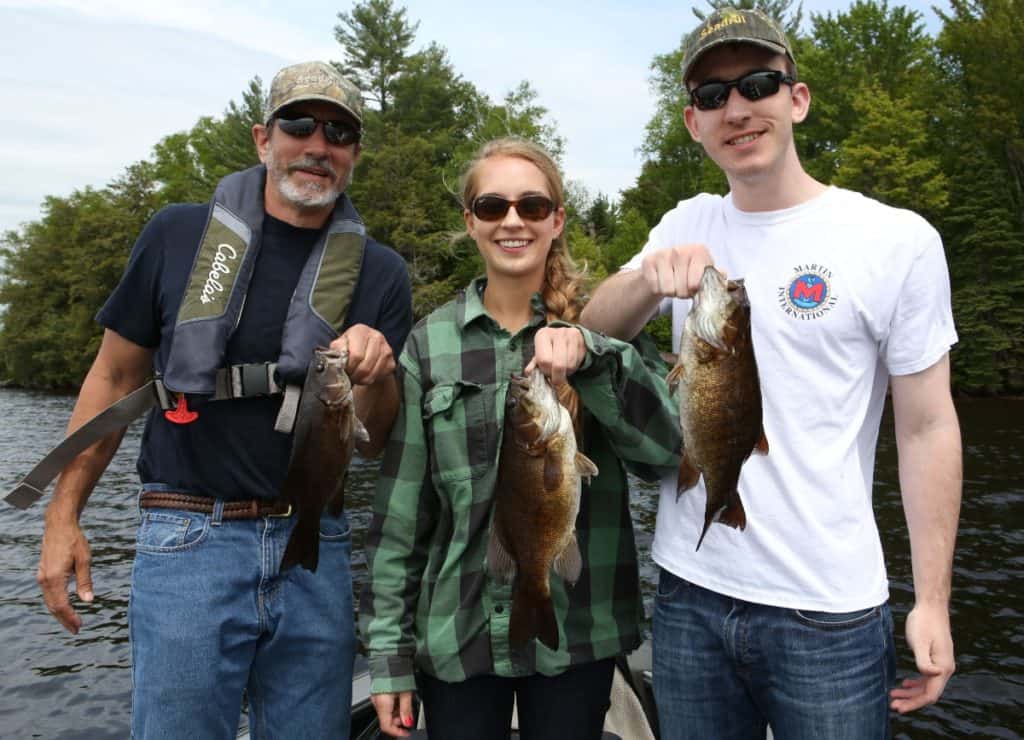
The enhanced maneuverability and responsiveness of shorter rods facilitate quick, precise adjustments during the cast, ensuring that the lure lands exactly where intended. While longer rods are favored for their ability to cover greater distances, their extended length can make precise casting more challenging. When accuracy is paramount, a shorter rod often becomes the preferred choice and offers the angler increased control over where their lure or bait ends up in the water.
When prioritizing accuracy, I recommend rods around 6′ to 6’6″.
Maneuverability
Rod maneuverability is significantly impacted by the length of the fishing rod. Shorter rods excel in terms of maneuverability. This agility is especially advantageous when fishing in areas where space is limited like crowded boats, kayaks, and canoes. The compact nature of shorter rods allows for easier handling when room as at a premium.
On the other hand, longer rods, while beneficial for distance casting and leverage, can be more cumbersome to maneuver, particularly in tight quarters or when trying to achieve precise lure placement. The increased length makes them less responsive to subtle angler inputs, potentially complicating the execution of techniques that require finesse and close control.
An often overlooked additional aspect of maneuverability is related to dealing with line twisted around the rod tip. A rod around 6 feet long is easy to reach the tip and untangle the line. A rod over 7 feet, especially when seated in a kayak or canoe, is difficult to reach the rod tip.
Portability and Transport
Portability and transport are practical considerations that can influence the choice of fishing rod length, particularly for anglers who travel frequently or fish in remote locations. Longer rods, while advantageous for casting distance and leverage, can pose challenges in terms of transport and storage. They may not fit easily in smaller vehicles, require specialized rod carriers, or be cumbersome to carry through dense vegetation or on long treks to fishing spots. Conversely, shorter rods offer superior portability, easily fitting inside most vehicles and being more manageable to carry on foot, making them ideal for anglers on the go or those who prefer to fish off the beaten path.
Some rods are designed to break down into multiple pieces, offering a compromise between the benefits of longer lengths and the convenience of portability. Choosing a rod that matches your transport needs and fishing lifestyle can make your fishing expeditions more enjoyable and less of a logistical challenge.
I find that one-piece, seven foot rods fit in most vehicles. Anything longer tends to become a challenge. Most rod manufacturers provide multi-piece, travel rods that break down into two or three foot lengths that are much easier to transport when space is tight.
Type of Fishing
The type of fishing significantly influences your optimal choice of rod length because different fishing methods have unique requirements or restrictions that affect performance.
- Surf Fishing:
- Preferred rod length: Over 9 feet. Potentially up to 15 feet.
- Maximizes casting distance to reach fish far from shore and handles heavy lures or bait.
- Stream or Small River Fishing:
- Preferred rod length: Under 7 feet.
- Offers superior maneuverability and accuracy for targeting fish in cover.
- Boat Fishing:
- Preferred rod length: 6 to 8 feet.
- Provides a good balance between casting ability and ease of use in confined spaces.
- Canoe or Kayak Fishing:
- Preferred rod length: 5 to 7 feet.
- Shorter rods enhance maneuverability and control in the tight space of a canoe or kayak.
- Wade Fishing:
- Preferred rod length: 6 to 8 feet.
- Medium to longer rods offer better reach over the water and flexibility in casting distance.
- Ice Fishing:
- Preferred rod length: 2 to 3 feet.
- Casting distance is not important for ice fishing. Short rods are purpose-made to provide enough leverage to reel fish in from under the ice while maximizing maneuverability in tight quarters.
Target Fish Species
The target fish species is an important consideration in selecting the appropriate fishing rod length, because different species exhibit varied behaviors and habitats that influence the fishing approach.
For larger and more powerful fish species, such as bass or pike, anglers often prefer longer rods that provide the features to both utilize the optimal techniques to target these fish as well as leverage needed to fight and land these formidable opponents. The increased length allows for greater control in making longer casts to cover more water. On the other hand, when targeting smaller species like trout or panfish, shorter rods are favored for their enhanced precision and maneuverability, allowing anglers to detect subtle bites and control their lures or bait with accuracy in tight spots.
Therefore, understanding the specific characteristics and requirements of the target species is essential in choosing a rod length that aligns with the angler’s strategy and maximizes their chances of a successful catch.
Fishing Location
Your fishing location plays a pivotal role in determining the ideal rod length, as each environment poses unique challenges and opportunities. In expansive, open waters like large lakes, longer rods are advantageous for achieving greater casting distances, enabling anglers to cover wide swathes of water with fewer casts. These longer rods also assist in handling the heavier lures or rigs often used in such settings.
You would think that the wide open waters deep sea fishing would require the longest rods, but my experience is that open, deep waters usually require vertical fishing techniques over casting techniques. Our most recent snapper trip offshore Galveston only needed comparatively short Penn rods with enough backbone to handle these fish. No casting required, we just dropped our bait straight off the side of the boat.
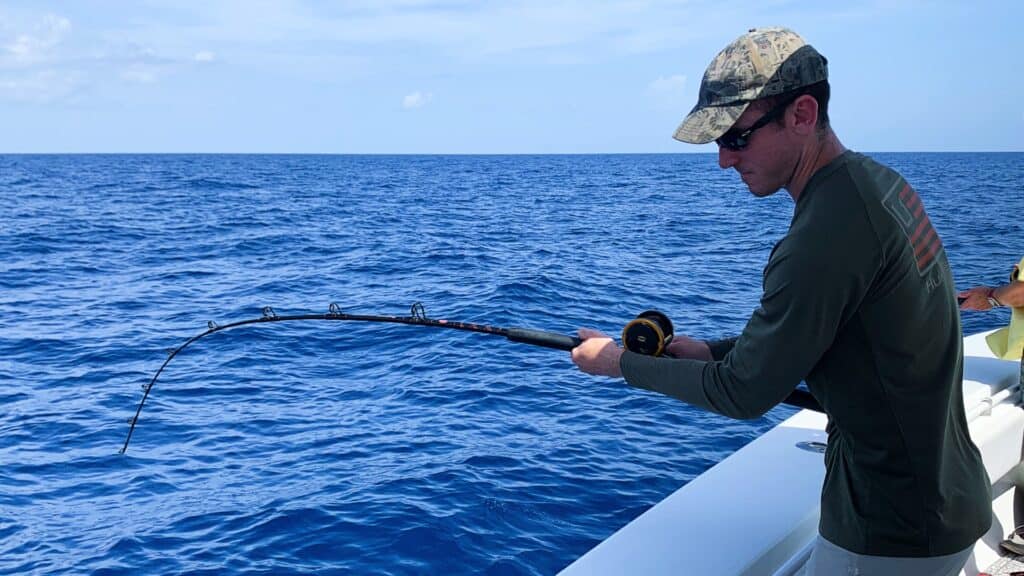
Conversely, in more confined spaces such as streams, wooded areas, small boats, canoes, kayaks, or places with overhanging vegetation, shorter rods excel. They offer improved accuracy for precise casts, better maneuverability under foliage, and easier handling in tight quarters where space is at a premium.
For most anglers, a medium-length rod around seven feet long offers the best compromise between casting distance and control, facilitating both the reach needed to cover water and the maneuverability to use in most locations. Selecting a rod length that matches the characteristics of the fishing location enhances the angler’s effectiveness and enjoyment of their time on the water.
Angler’s Physical Comfort and Skill Level
The choice of fishing rod length should also consider the angler’s physical comfort and skill level, as these personal factors greatly influence the overall fishing experience. A rod that matches the angler’s stature and strength ensures better control and reduces fatigue, allowing for longer, more enjoyable fishing sessions.
Shorter rods, for instance, might be more suitable for younger anglers or those with a smaller build, as they are easier to handle, maneuver, and require less effort to cast accurately. Conversely, taller anglers may find longer rods more comfortable and effective, as they can better accommodate the additional leverage such rods provide.
Skill level plays an equally important role; beginners may benefit from the simplicity and control of shorter rods, which can help in mastering casting techniques and lure control. More experienced anglers, capable of handling the complexity of longer rods, can leverage their extended reach and casting capabilities to enhance their fishing strategies. Thus, selecting a rod length that aligns with the angler’s physical attributes and proficiency not only maximizes comfort and effectiveness but also contributes to a more satisfying and successful fishing experience.
Pros and Cons of Different Rod Lengths
In practice, finding the perfect balance of casting distance, casting accuracy, and maneuverability is a give and take on features based on angler preference, experience, and desired fishing technique. I’ve created the below quick list of pros and cons for common rod lengths to help pick the right rod length for your situation:
- Short Rods (Under 6′)
- Pros:
- Increased accuracy for precise casting.
- Easier to maneuver in tight spaces.
- Ideal for fishing in dense vegetation or small streams.
- Great option for vertical jigging from the side of a boat.
- Cons:
- Limited casting distance.
- Reduced leverage for fighting larger fish.
- Pros:
- Medium Rods (6-7’6″)
- Pros:
- Versatile; suitable for a variety of fishing techniques.
- Good balance between casting distance and accuracy.
- Suitable for both beginners and experienced anglers.
- Cons:
- May not excel in specific scenarios like very tight spaces or long-distance casting.
- Pros:
- Long Rods (Over 7’6″)
- Pros:
- Maximizes casting distance, ideal for situations like surf fishing or covering large swathes of water.
- Can provide greater leverage for fighting big fish.
- Helps in fishing from shore, reaching over vegetation or to deeper water.
- Cons:
- Can be cumbersome and difficult to maneuver, especially for beginners.
- Less accuracy in casting, particularly in confined spaces.
- Requires more skill to handle effectively.
- Pros:
Practical Tips for Selecting the Right Rod Length
Choosing the correct fishing rod length is important to foster a positive fishing experience. Here are some practical tips to help you make the best choice:
- Consider Your Fishing Environment: If you primarily fish in open waters, like lakes or the sea, opt for a longer rod to maximize your casting distance. For fishing in confined spaces, such as creeks, small vessels or under heavy cover, a shorter rod will offer better control and accuracy.
- Match the Rod to Your Target Species: Think about the size and type of fish you’re targeting. Larger species can require longer rods for better leverage, while smaller fish can commonly be more effectively caught with shorter rods that offer greater sensitivity. This isn’t a hard and fast rule!
- Consider Your Fishing Technique: The fishing technique you prefer or plan to use most often should heavily influence your rod length choice. For instance, if you want to utilize a baitcasting rod with a search bait to find bass, longer rods can provide the necessary reach and flexibility. For situations where precision is crucial, shorter rods might be more advantageous. Each technique has its nuances, and the right rod length can significantly affect your success and enjoyment.
- Assess Your Skill Level: Beginners may find shorter to medium-length rods easier to manage and learn with, as they are more forgiving and easier to control. More experienced anglers might prefer longer rods for their advanced casting capabilities and leverage.
- Try Before You Buy: Whenever possible, test different rod lengths before making a purchase. This can give you a feel for what suits your style of fishing, physical comfort, and skill level the best.
- Consult with Experienced Anglers: Don’t hesitate to ask for advice from more experienced fishermen or from staff at your local tackle shop. They can offer valuable insights based on your specific needs and preferences.
- Factor in Transport and Storage: Consider how you’ll transport and store your rod. Longer rods can be more challenging to transport, especially if you don’t have a vehicle suited to carrying them without risk of damage.
- Versatility Is Key for Starters: If you’re new to fishing or unsure about your primary fishing type, a medium-length rod offers a good balance of casting distance, accuracy, and versatility across various fishing situations.
By keeping these tips in mind, you’ll be better equipped to choose a fishing rod length that not only meets your needs but also enhances your overall fishing experience.
Matching Length with Rod Action and Power
When selecting a fishing rod, understanding the relationship between rod length, action, and power is crucial for optimizing performance. Each of these factors plays a significant role in how a rod behaves under different fishing conditions and techniques.
Rod Length: As discussed, rod length affects casting distance, accuracy, and maneuverability. Longer rods offer extended casting capabilities, while shorter rods provide greater precision and control.
Rod Action: This refers to where along the rod’s length the bend occurs when pressure is applied. Actions range from fast (bends primarily near the tip) to moderate (bends in the middle) to slow (bends down into the butt of the rod). Fast action rods are more sensitive and provide a quicker power response, making them ideal for techniques requiring sensitivity and swift hook sets. Moderate actions offer more flexibility, which can be advantageous for casting distance and fighting fish, as they distribute the stress along a larger portion of the rod.
Check out our article on fishing rod actions for an even deeper dive on choosing the right action for your needs.
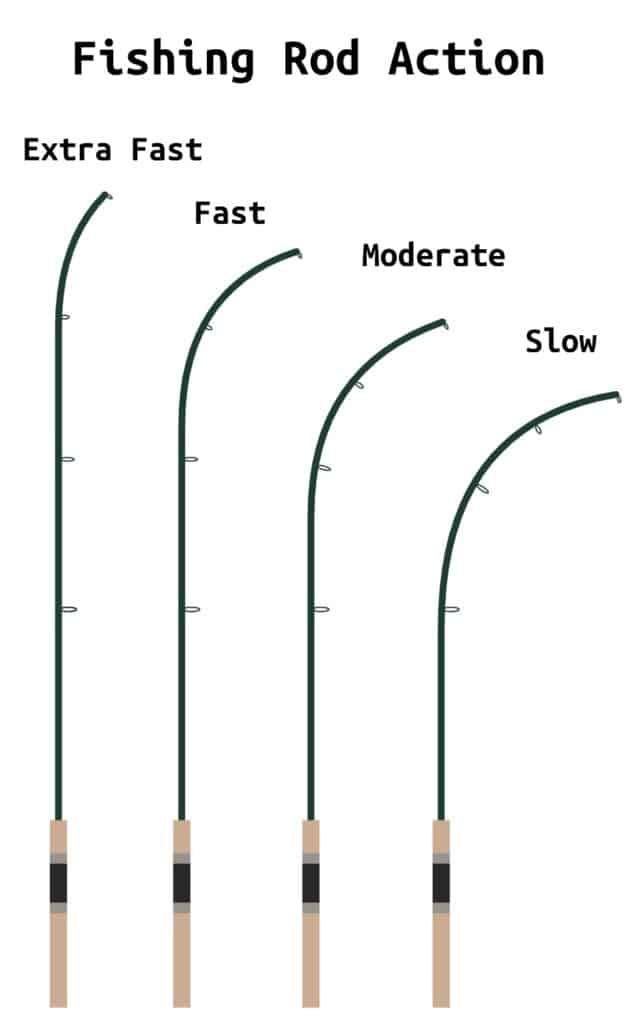
Rod Power: Power indicates the rod’s resistance to bending under pressure and is categorized from ultra-light to heavy. Heavier power rods can handle larger fish and heavier lures, while lighter power rods are better suited for smaller species and lighter lures.
Check out our article on how rod blanks affect fishing rod action and power.
Integrating Rod Length with Action and Power
- For Precision Casting and Sensitivity: Choose a shorter rod with fast action and light to medium power. This combination is perfect for finesse techniques where accuracy and the ability to feel subtle bites are paramount. It works well for fishing with light lures and in situations requiring precise lure placement, such as when targeting structure or in clear water conditions.
- For Long-Distance Casting and Versatility: Opt for a longer rod with moderate action and medium to heavy power. The added length facilitates longer casts, while the moderate action offers a good balance between sensitivity and flexibility, making it suitable for a variety of lures and techniques. This setup is ideal for covering more water, such as when surf fishing, casting large swimbaits, or when you need the versatility to switch between different fishing methods without changing equipment.
- For Heavy Lures and Big Fish: A long rod with fast action and heavy power is the go-to choice. The fast action provides the sensitivity needed to detect bites and the backbone for solid hooksets, while the heavy power ensures you have the strength to handle big fish and cast large, heavy lures. This combination is often used in offshore fishing, targeting large freshwater species like pike and musky, or when fishing deep with heavy jigs.
- For All-Around Fishing: A medium-length rod (around 6’6” to 7’6”) with moderate to fast action and medium power offers a versatile setup that can handle a wide range of fishing techniques and species. It strikes a balance between casting distance and accuracy, sensitivity, and the strength to fight most freshwater fish.
Top Rod Recommendations
To simplify things, let’s tackle a common question: If you had to choose just one rod that excels for your preferred fishing method, what would it be?
Below, we’ve distilled the essentials to help you make prioritize your rod choice. The subheadings are linked to our in-depth guides on the best fishing rods for these types of fishing.
Bass Fishing
- Recommended Rod: Medium Power, Fast Action, 7’ Length
- Why: This combination offers the sensitivity and backbone necessary for effectively setting the hook with soft plastics and jigs, while the 7’ length provides a good balance between casting accuracy and distance.
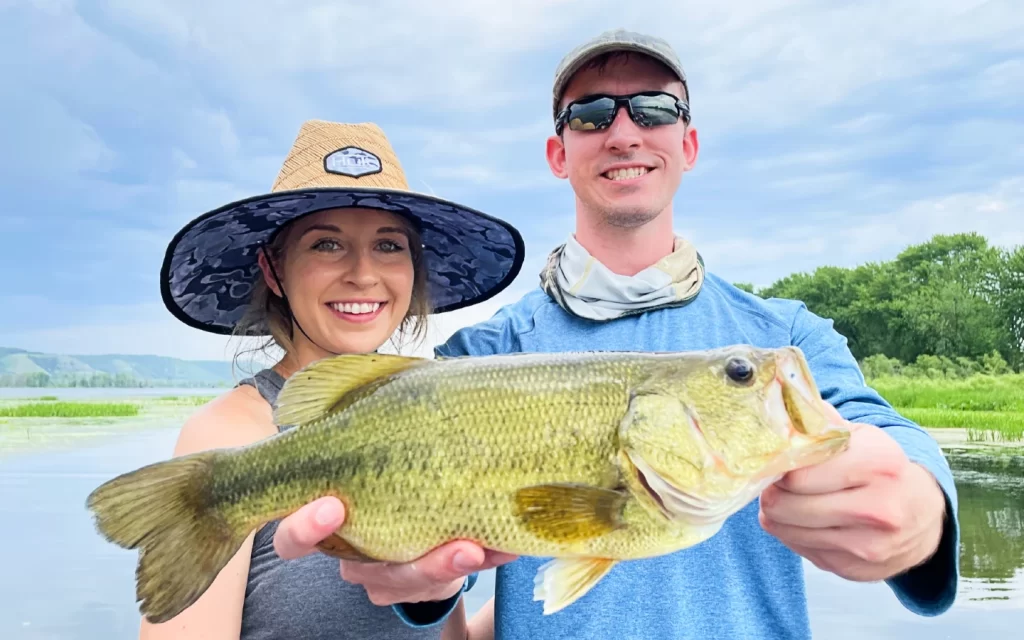
Panfish Fishing
- Recommended Rod: Light Power, Fast Action, 6’6″ Length
- Why: This combination offers superior sensitivity and maneuverability for targeting comparatively small panfish.
Walleye Fishing
- Recommended Rod: Medium-Light Power, Fast Action, 7′ Length
- Why: This combination offers superior sensitivity and casting distance for targeting finnicky walleye.
Trolling for Lake Trout and Salmon
- Recommended Rod: Medium-Heavy, Moderate Action, 7’ to 8′ Length
- Why: Longer rods disperse stress along the blank, important for the heavy loads encountered while trolling. Moderate action offers additional ‘give’ in the system acting like a shock absorber when the fish strikes the bait.
Surf Fishing
- Recommended Rod: Medium Power, Moderate to Fast Action, 10’ to 12’ Length
- Why: The extra length is crucial for casting beyond the surf, while medium power ensures you can handle the rigors of saltwater fishing and fight larger fish. Medium power may be light for the largest surf fish, but I recommend a medium power as an all-around rod vs getting a heavy power rod to start. The action allows for good casting performance.
Inshore Saltwater Fishing – Flounder, Redfish, Speckled Trout
- Recommended Rod: Medium Power, Fast Action, 7’ Length
- Why: Ideal for casting a variety of lures and baits with precision, this setup also provides the strength needed to fight saltwater species commonly found inshore, like redfish, speckled trout, and flounder.
Conclusion
Selecting the right fishing rod length is a critical decision that can significantly enhance (or inhibit) your angling experience. Rod length directly impacts your ability to cast appropriate distances, cast accurately, maneuver your equipment, and ultimately, catch fish. Throughout this article, we’ve explored the various factors that should guide your choice, including the type of fishing you engage in, the species you target, the locations you frequent, and your own physical comfort and skill level. We’ve also weighed the pros and cons of different rod lengths, from the agility and precision of shorter rods to the casting prowess of longer options, and offered practical tips for making the best selection for your needs.
There is no one-size-fits-all answer when it comes to the perfect rod length. It’s about finding the right tool for the job that and suits the specific conditions you face on the water. Whether you’re casting from the surf, navigating a stream, or fishing from the deck of a boat, taking the time to choose a rod with the right length will pay dividends in your fishing success and enjoyment.
Liked this article? Check out our ultimate guide on how to choose a fishing rod for additional reading.
Rod Length Frequently Asked Questions
- What length of fishing rod is best for beginners?
- Beginners should pick a medium-length rod, around 6’6″ to 7’6″. This length offers a good balance between casting distance, control, and versatility, making it easier to handle for those new to fishing.
- Does the type of fish I’m targeting affect the rod length I should choose?
- Type of target fish is a factor when selecting rod length, but the desired fishing technique is usually a more important consideration. Rod length affects casting distance, casting accuracy, and rod control. Shorter rods should be used for techniques that require short, accurate casts. Long rods should be used when casting distance is most important.
- Is a longer rod always better for casting farther?
- Longer rods provide greater casting distance with significantly less effort when compared to shorter rods. This is particularly useful in surf fishing that requires long distance casts or when fishing a technique like crankbait fishing that may require repeated, long casts. Trying to cast a short rod with all your strength will wear you out when just picking a long rod for effortless, long-distance casts would be a better option.
- Can the fishing location affect my choice of rod length?
- Fishing location definitely affects choice of rod length. In tight spots like densely vegetated banks or small streams, a shorter rod can be more manageable. In open areas like beaches or large lakes, longer rods have enough space to be used effectively.
- How important is my height and strength when choosing a rod length?
- Your physical attributes should definitely be considered when picking a fishing rod length. Taller anglers may find longer rods more comfortable, while shorter or younger anglers might prefer shorter rods for better control and ease of use.
- Are there specific rod lengths recommended for boat fishing?
- For boat fishing, shorter to medium-length rods are often preferred, as they are easier to maneuver in the confined space of a boat and are still effective for various fishing techniques.
- Should I have different rod lengths for different fishing scenarios?
- If you fish in a variety of locations or target different species, having multiple rods of varying lengths can be beneficial to adapt to each specific scenario. While medium length rods around 7′ long can perform most fishing techniques, it is often beneficial to have fit-for-purpose rods for different techniques. For example, a 6′ vertical jigging rod to fish vertically off the side of the boat will be more comfortable and maneuverable than performing the same technique with an 8′ rod.
- Can children use the same rod length as adults?
- Children often find shorter rods more comfortable because they are easier for them to handle and control. Rods around 4 to 6 feet are generally suitable for younger anglers.
- Where can I test different rod lengths before purchasing?
- Many sporting goods stores and fishing specialty shops offer demo rods that you can test. It’s also a good idea to attend fishing expos or talk to fellow anglers who might let you try their gear.
- How does rod length affect the fight with a fish?
- Longer rods offer better shock absorption due to their ability to bend more during a fish fight, which can be beneficial when targeting larger species as it reduces the risk of line breakage. Shorter rods, on the other hand, provide greater power and control for the angler, making it easier to steer the fish and apply more direct pressure, but they offer less forgiveness with sudden pulls or jumps.
- What is the best rod length for kayak fishing?
- For kayak fishing, rods between 6 to 7 feet are generally ideal. This range offers a good balance between casting ability and maneuverability within the limited space of a kayak. Shorter rods can also be easier to handle when landing fish close to the kayak.
- How do weather conditions influence rod length choice?
- In windy conditions, shorter rods might offer better control and less wind resistance, making it easier to maintain accuracy. During calm conditions, longer rods can maximize casting distance. Adjusting rod length based on weather conditions can help optimize casting performance and comfort.
- Does rod length affect lure selection?
- Yes, rod length can influence lure selection. Longer rods can handle heavier lures and allow for longer casts, making them suitable for search baits or when fishing in deep water. Shorter rods are better for precision casting with lighter lures, ideal for targeting specific structures or in shallow waters.
- How to transport and store longer fishing rods?
- For transporting and storing longer rods, consider using a rod tube or a specialized rod rack for your vehicle. Breakdown or telescopic rods can also be a good option, as they reduce in size for easier handling. Always ensure rods are securely fastened and protected to prevent damage during transport.
- What rod length is recommended for trolling?
- For trolling, rods between 7 to 9 feet are commonly used. The extra length helps in spreading out lines to avoid tangling and allows for better shock absorption when a fish strikes, providing a buffer that can prevent hook pulls, especially at higher trolling speeds.
- Can I use the same rod length for both freshwater and saltwater fishing?
- Yes, it is possible to use the same rod length for both freshwater and saltwater fishing. That said, it’s important to consider the species you’re targeting and the environment. Saltwater fishing often requires heavier-duty rods to handle larger fish and harsher conditions, whereas freshwater fishing might benefit from a variety of rod lengths based on the specific situation and species.
- How does rod length influence casting technique?
- Rod length directly impacts casting technique. Longer rods require a more pronounced arm and body movement to utilize their full casting potential, while shorter rods can be cast with less effort and more wrist action. Adapting your casting technique to match the rod length is crucial for achieving optimal performance.
- What rod length works best for fishing with kids?
- For children, rods in the 4 to 6-foot range are often best. These lengths are easier for kids to handle, making casting and reeling more manageable and enjoyable. The shorter length also reduces the risk of tangling and improves their overall fishing experience.
- Are there any rod length regulations or restrictions I should be aware of?
- Some fishing locations and tournaments may have regulations or restrictions on rod length. It’s always a good idea to check the local rules and regulations of the area you plan to fish or the specific tournament guidelines. This is more common in competitive fishing scenarios or in certain conservation areas to ensure fair practices and protect wildlife.

Written By: Andrew Juran
Andrew is a seasoned angler with over 25 years of experience fishing across the United States. He has caught hundreds of fish using various techniques and mentored many in the art of fishing. An advocate for sustainable fishing, Andrew is an active member of the Coastal Conservation Association, an organization committed to marine conservation.
For frequent fishing tips, behind-the-scenes looks, and real-time catches, connect with Andrew on Instagram



